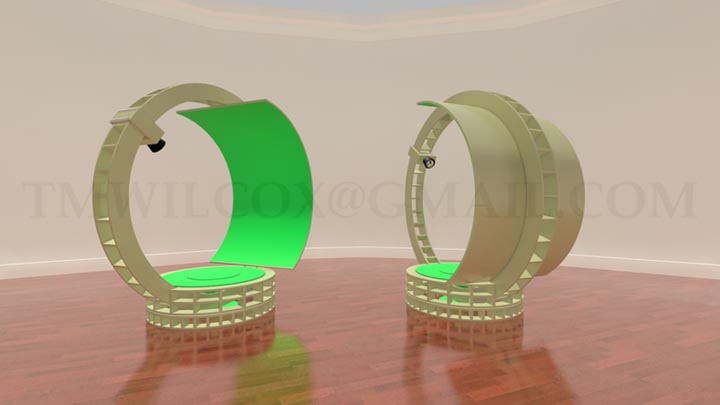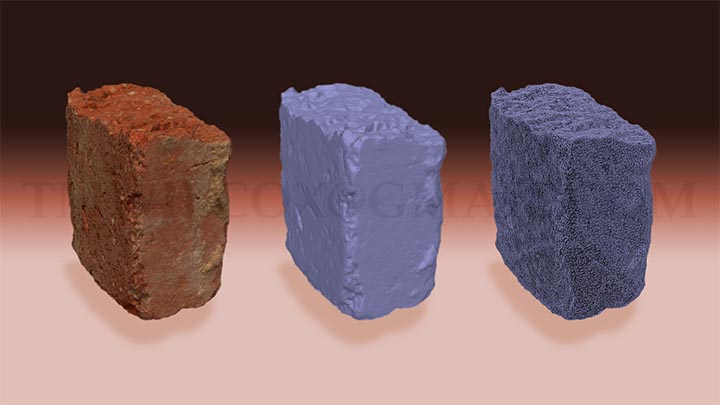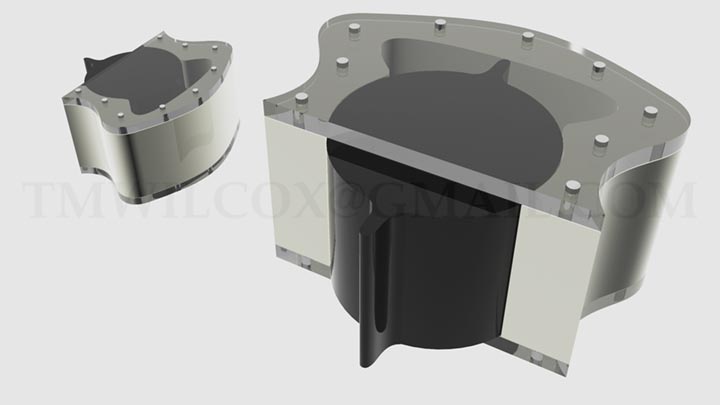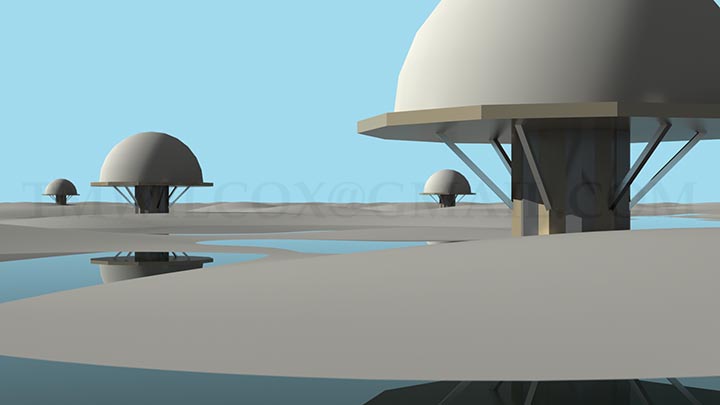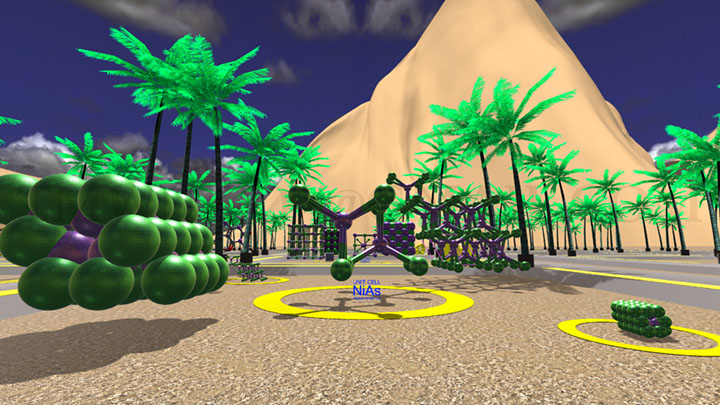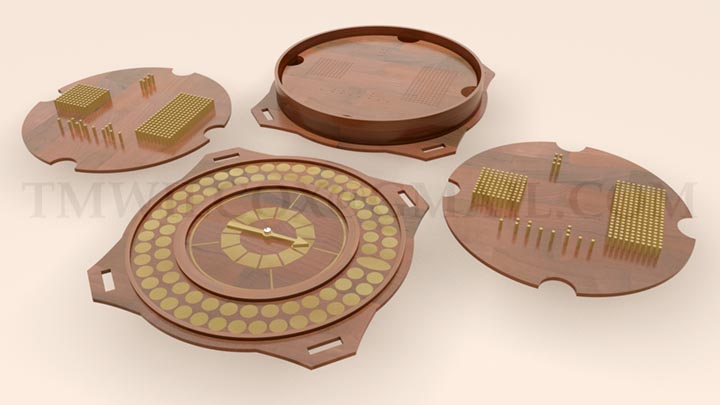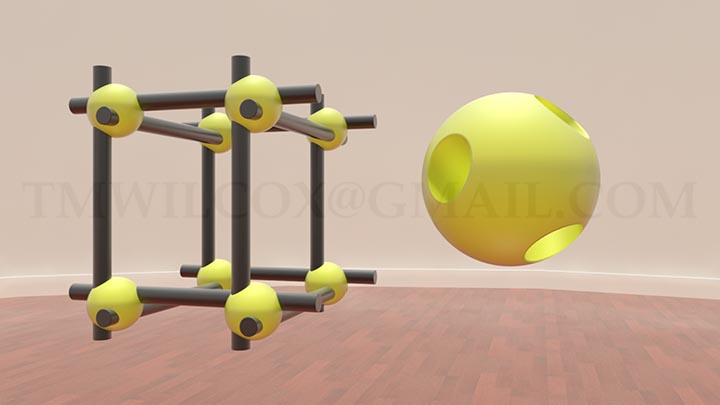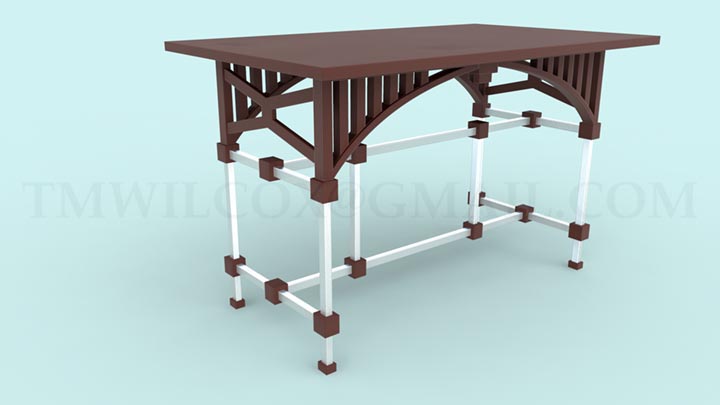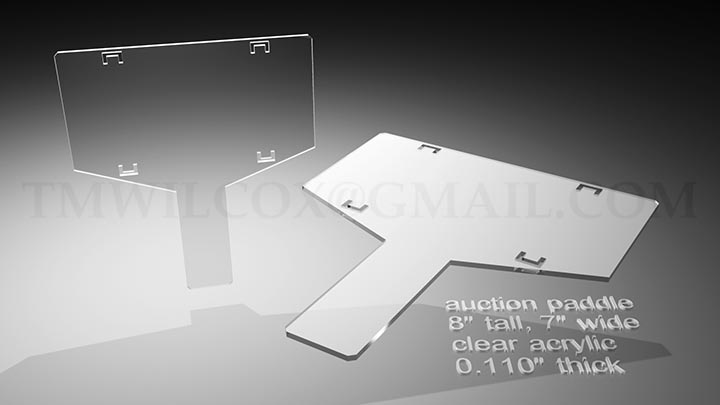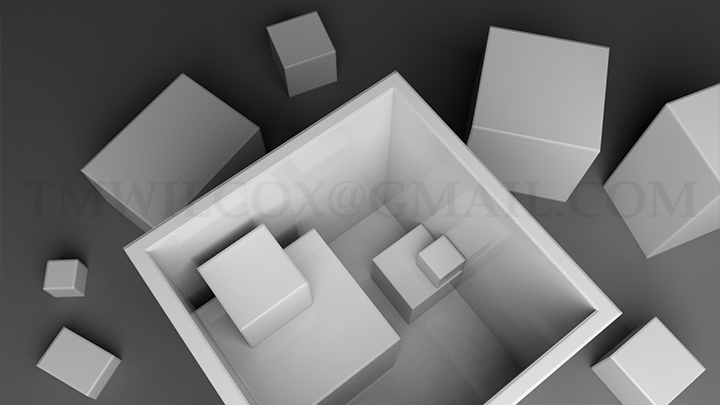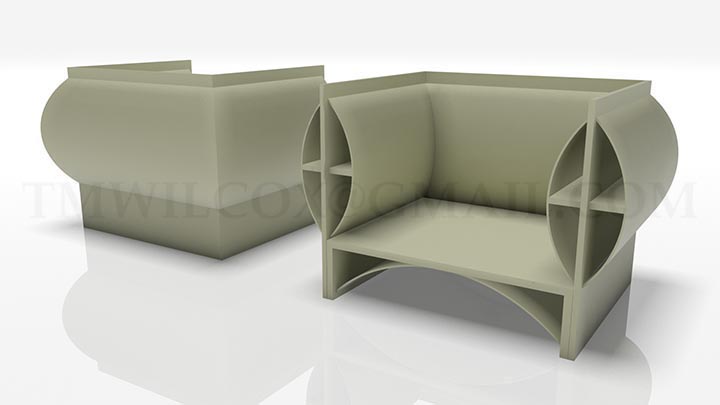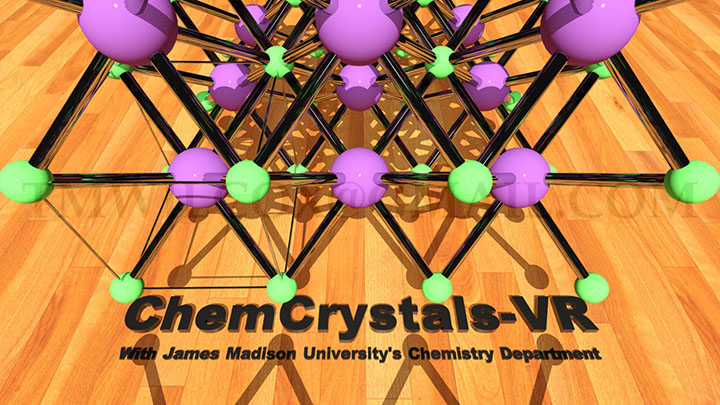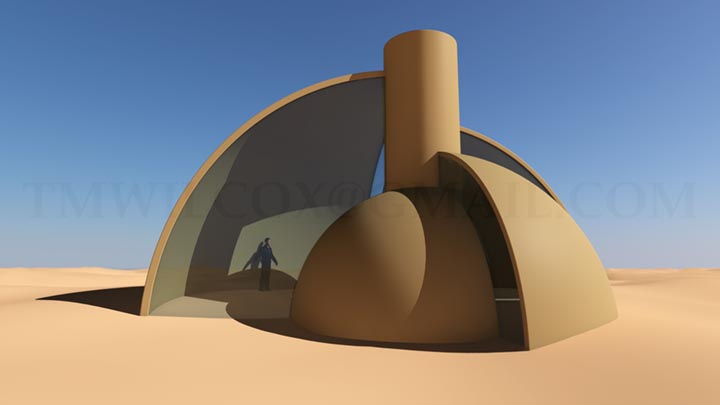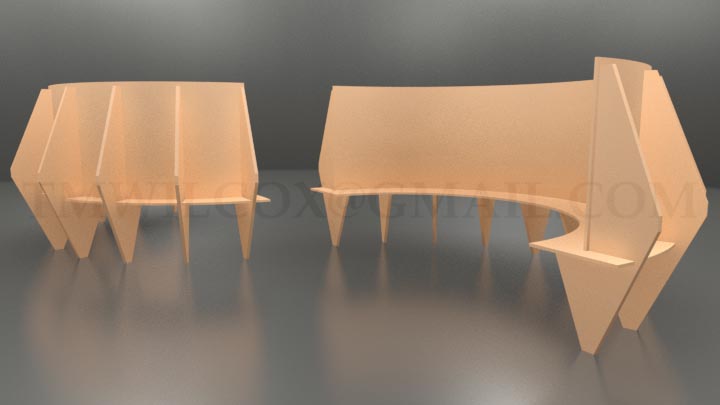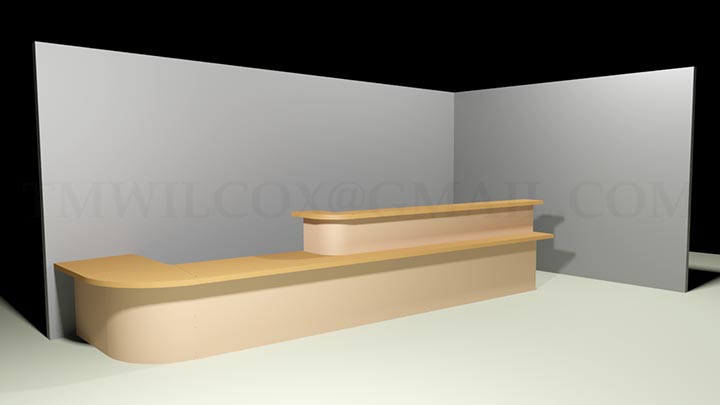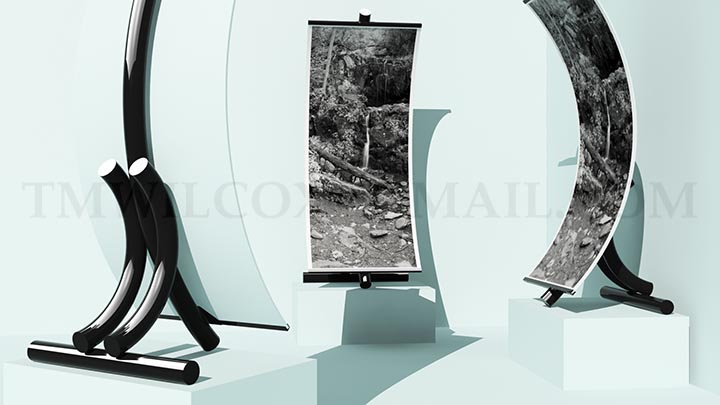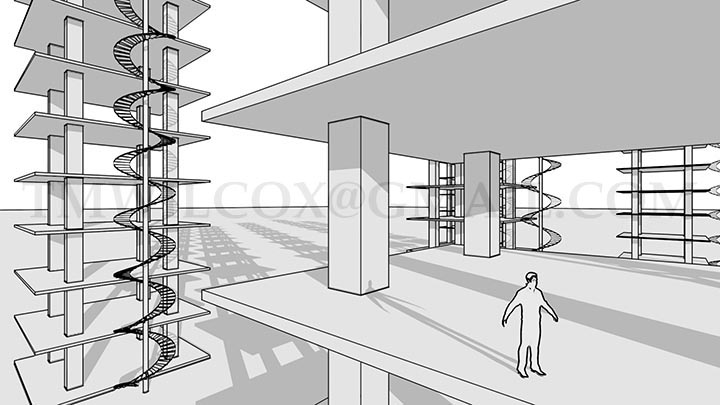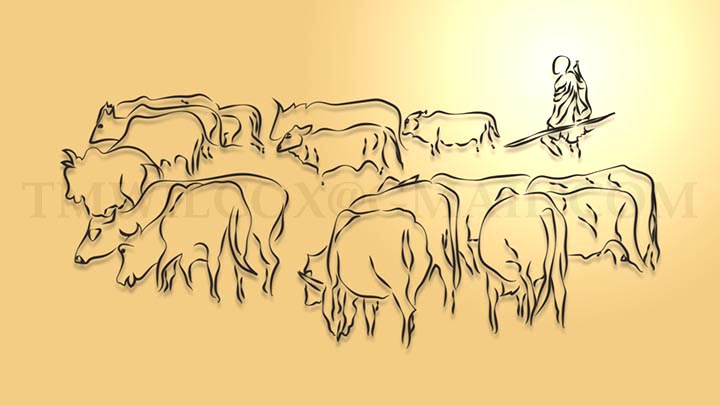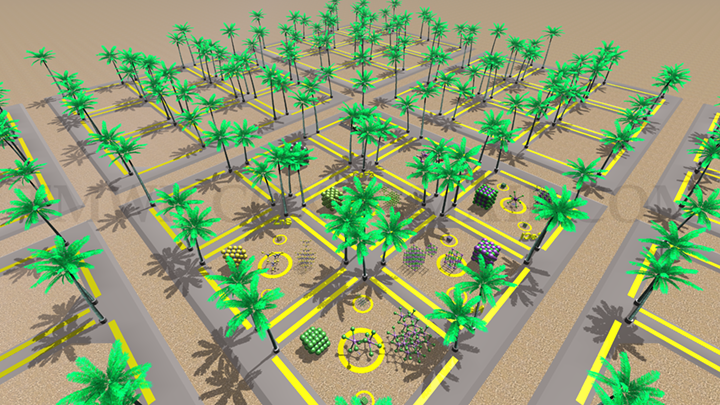
- Case Study -
CGI STILL LIFE

Every item in this still life is computer generated. It's challenging recognizing near photorealistic computer-generated imagery (CGI) in recent games and movies. A wireframe overlay identifies it here. I developed the CGI Still Life environment to benchmark virtual reality head mounted display performance.
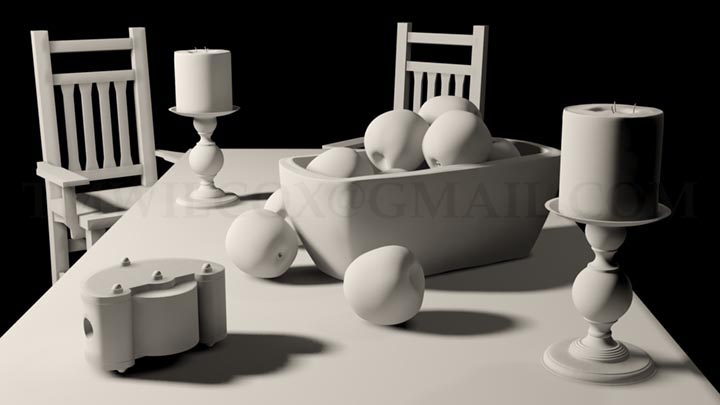
When 3D models in a scene use a moderately reflectant white surface material, they look like cast plaster with soft shadows and highlights. It's a quick way to evaluate objects in their environment, as if they were sculpture. For these test renders, I chose camera angles from infinite possibilities.
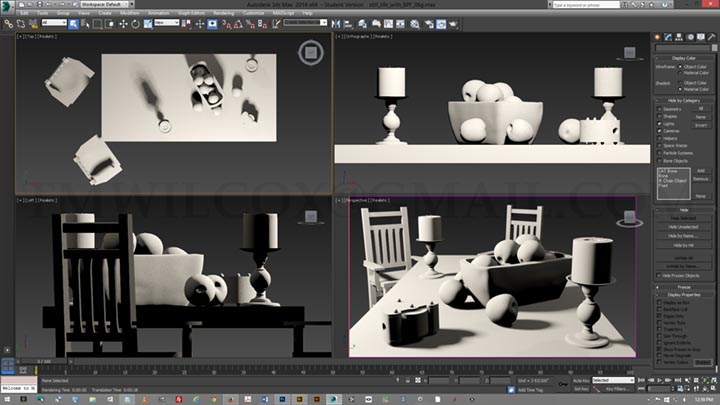
Before importing them into a game engine, I export scene objects as polygon meshes from 3ds Max modeling and animation software. My preffered screen layout resembles orthographic views of a mechanical drawing. Some day, CAD software adapted for virtual reality will have a graphical user interface that follows me as I move about a scene, creating whatever I need in situ.

For this experiment, specular highlights on the apples were turned off to accelerate frame rate. At the moment, VR headsets and computers can't display real-time simulations of ray traced light refracted by thick, irregular glass. Movies are recorded at 24 to 30 frames per second. Virtual reality hardware and software ideally generate at least 120 frames per second, minimizing flicker and reducing vestibular disturbance.

Every item in this still life is computer generated. It's challenging recognizing near photorealistic computer-generated imagery (CGI) in recent games and movies. A wireframe overlay identifies it here. I developed the CGI Still Life environment to benchmark virtual reality head mounted display performance.

When 3D models in a scene use a moderately reflectant white surface material, they look like cast plaster with soft shadows and highlights. It's a quick way to evaluate objects in their environment, as if they were sculpture. For these test renders, I chose camera angles from infinite possibilities.

Before importing them into a game engine, I export scene objects as polygon meshes from 3ds Max modeling and animation software. My preffered screen layout resembles orthographic views of a mechanical drawing. Some day, CAD software adapted for virtual reality will have a graphical user interface that follows me as I move about a scene, creating whatever I need in situ.

For this experiment, specular highlights on the apples were turned off to accelerate frame rate. At the moment, VR headsets and computers can't display real-time simulations of ray traced light refracted by thick, irregular glass. Movies are recorded at 24 to 30 frames per second. Virtual reality hardware and software ideally generate at least 120 frames per second, minimizing flicker and reducing vestibular disturbance.

When 3D models in a scene use a moderately reflectant white surface material, they look like cast plaster with soft shadows and highlights. It's a quick way to evaluate objects in their environment, as if they were sculpture. For these test renders, I chose camera angles from infinite possibilities.

Before importing them into a game engine, I export scene objects as polygon meshes from 3ds Max modeling and animation software. My preffered screen layout resembles orthographic views of a mechanical drawing. Some day, CAD software adapted for virtual reality will have a graphical user interface that follows me as I move about a scene, creating whatever I need in situ.

For this experiment, specular highlights on the apples were turned off to accelerate frame rate. At the moment, VR headsets and computers can't display real-time simulations of ray traced light refracted by thick, irregular glass. Movies are recorded at 24 to 30 frames per second. Virtual reality hardware and software ideally generate at least 120 frames per second, minimizing flicker and reducing vestibular disturbance.
